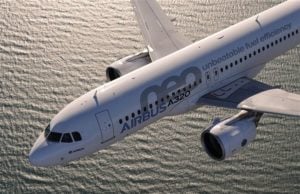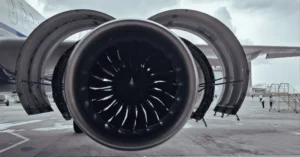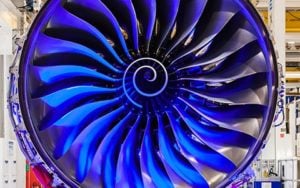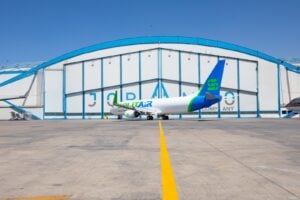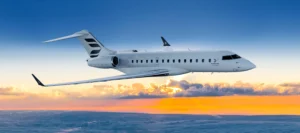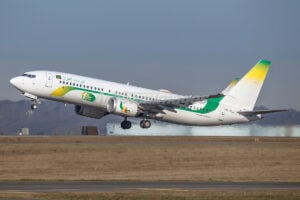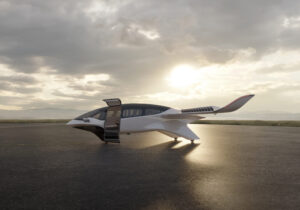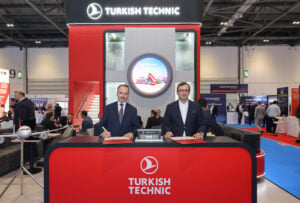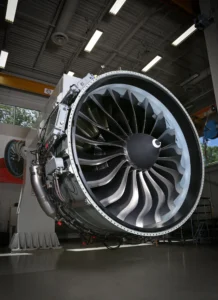The Evolution of Aircraft Component Maintenance
By David Dundas
Ever since the first days of powered fight, aircraft component maintenance has changed almost beyond recognition. From rudimentary inspections in early aviation to today’s sophisticated predictive maintenance systems, the evolution reflects advancements in materials, technology, safety standards, and operational efficiency. Here we want to trace the development of aircraft component maintenance and highlight the key milestones that have shaped this sector of the commercial aviation industry.
From reactive to preventative maintenance
In the early 20th century, aircraft maintenance functioned on a primarily reactive basis. In simple terms, maintenance activities were carried out after a component failed or there was considerable visible wear and tear. Pilots and mechanics relied on rudimentary tools and limited personal experience to inspect aircraft and carry out any necessary repairs to components. The lack of formal standards and little or no documentation often led to inconsistent practices and dramatically compromised safety. However, that was to change dramatically with the onset of the First World War.
While the war between the Turks and Italians in 1911 saw the first use of aircraft in combat, the First World War, or The Great War as it is also known, was the first global conflict that involved aircraft. Initially those used were unarmed and flown for reconnaissance purposes, but during the build-up to the war and the first year, manufacture of combat biplanes became paramount. With their manufacture came a volume of aircraft and the requirement for constant maintenance and upkeep, repairs and replacement of parts after almost every flight. While repairs were intended to keep aircraft airworthy, strict maintenance procedures were introduced in order to minimise the risks of mechanical and structural failure during combat.
In the post-war period during the 1930s, both commercial and military aviation developed scheduled preventative maintenance programmes, for the first time adopting a more proactive as opposed to reactive maintenance and upkeep strategy.
The introduction of preventive maintenance
Post-Second World War commercial airlines had developed much more robust time-based maintenance schedules which required that specific aircraft components be inspected and/or replaced after a specific number of flight hours or cycles had been completed. These more effective and rigorous practices were formalised with the establishment of aviation authorities such as the Federal Aviation Administration (FAA) in the United States in 1958, and the UK equivalent, the Civil Aviation Authority (CAA) in 1970.
It was during this period that the concept of Maintenance, Repair, and Overhaul (MRO) and appropriate facilities also emerged. These facilities centralised maintenance operations, enabling more thorough inspections and overhauls of critical components such as engines, landing gear, and avionics systems. Such dramatic changes to the ‘behind the scenes’ operations had become a critical element of commercial aviation through the increasing complexity in design and structure of commercial aircraft. After all, it was in 1952 that the first commercial ‘jetliner’ entered service, the BOAC Comet 1, built by De Haviland and which could carry 36 passengers.
The paradigm shift to reliability-centred maintenance (RCM)
The 1960s and 1970s saw the introduction of what became known as reliability-centred maintenance (RCM). Initially unique to and pioneered by the airline industry, RCM placed appreciably greater emphasis on maintaining the inherent reliability of components rather than adhering strictly to time-based schedules. This approach differed considerably to previous MRO practices as it recognised that some components degraded predictably while other components were prone to failure on a random basis. One must remember that we are talking about a time where parts’ design and manufacturing processes were such that, as with all new technology at the time, there was a propensity for the structural failure of a small percentage of parts over time for reasons other than wear and tear.
In 1970, Boeing’s 747, the ‘Jumbo Jet’, first entered into commercial service with Pan Am, and overnight, RCM became a cornerstone of the Maintenance Steering Group (MSG) approach, which was first applied to this aircraft. The MSG framework outlined systematic processes to determine optimal maintenance tasks, focusing on safety and cost-effectiveness. So ground-breaking and effective at the time, this methodology is still used today together with continuous updates to address the ever-changing challenges of the aviation sector.
The digital revolution has ushered in massive technological changes
It was in the 1990s that technological advancements saw a virtual avalanche of changes that helped to totally revolutionise component maintenance. The driving forces behind many of these changes was the search for materials that would minimise weight and maximise structural performance, improve damage tolerance and corrosion resistance, as well as reduce manufacturing and maintenance costs. Consequently, new materials introduced into aircraft structures included:
Carbon fibre composites which were used in secondary structures like engine cowlings and undercarriage doors. Carbon fibre-reinforced plastic was used in the A310, while the 787 Dreamliner was the first large commercial aircraft to use carbon composite in more than half of its fuselage. Additionally, we had other new materials such as aluminium-lithium alloys and superplastically (SPF)/diffusion bonded (DB) titanium, the latter being a new material that was likely to be used in aircraft structure. We also had polymer matrix composites, carbon nanotubes (CNTs), and phenolic composites which were used in aircraft cabins as those composites were resistant to chemicals, heat, and fire.
Along with new materials came new MRO procedures and techniques including non-destructive Testing (NDT) such as ultrasonic, radiographic, and eddy current testing which enabled the detection of defects without dismantling components. While the integration of digital avionics systems improved diagnostics and troubleshooting, reducing maintenance time and costs, computerised maintenance management systems (CMMs) streamlined maintenance planning, tracking and documentation, ensuring compliance with regulatory standards.
The Age of Predictive Maintenance
More recently, predictive maintenance has emerged as the gold standard in aircraft component maintenance. Powered by data analytics, artificial intelligence (AI), and the Internet of Things (IoT), predictive maintenance uses real-time data to anticipate component failures before they occur. Three key developments include health monitoring systems where today’s aircraft are now equipped with sensors that monitor the performance of critical systems and components, enabling early detection of anomalies. The introduction of big data analytics now means airlines and MRO providers can leverage vast amounts of operational data to identify patterns and predict maintenance needs. Finally, we have 3-D printing, a relatively new technology which facilitates the rapid production of replacement parts, reducing lead times and inventory costs.
Regulatory and Environmental Considerations
As the aviation industry evolves, maintenance practices are increasingly shaped by regulatory and environmental concerns. Stringent emissions regulations have driven innovations in engine maintenance, while sustainable practices, such as recycling components, are gaining traction. Regulatory bodies like the European Union Aviation Safety Agency (EASA) and the FAA continue to update maintenance standards to keep pace with technological advancements.
Challenges and Future Directions
Despite progress, challenges remain. The global shortage of skilled technicians poses a significant hurdle, as does the complexity of integrating new technologies with existing systems. Looking ahead, advancements in AI, digital twins, and blockchain are expected to further enhance the efficiency and reliability of component maintenance.
As we have seen, the development of aircraft component maintenance reflects the broader evolution of aviation. From reactive repairs to predictive strategies, each era has contributed to safer, more reliable, and cost-effective air travel. As technology continues to advance, the future of aircraft component maintenance promises even greater innovation, ensuring that aviation remains one of the safest modes of transportation.



